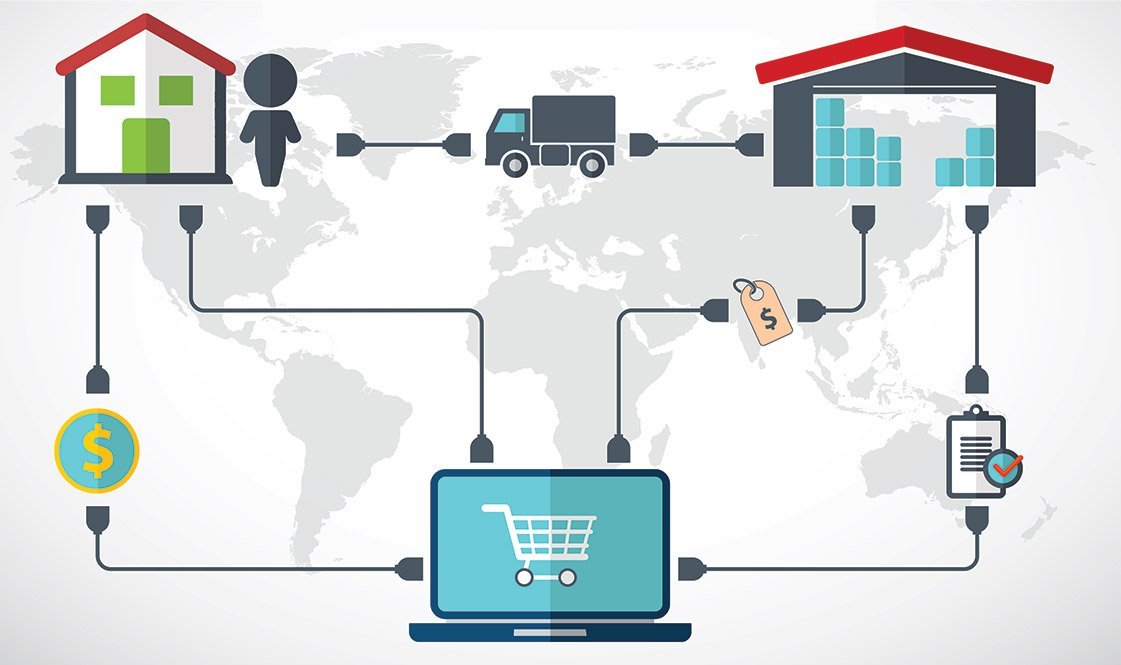As direct-to-consumer fulfillment continues its rapid growth, both suppliers and retailers are embracing new opportunities — and facing challenges.
More Merchandise for Less Overhead
Let’s start with the opportunities. With drop shipping, retailers can offer a wider selection of merchandise from a broad range of vendors, all without needing to manage the significant expenses that a larger inventory creates. That can make it easier for an upstart manufacturer to get their product into a major store, and it can make a small retailer appear far larger to potential customers.
It’s hardly surprising that nearly all retailers now want their suppliers to provide drop shipping or that major brands such as Hugo Boss and Lacoste have invested heavily in their drop ship capabilities. Drop shipping, after all, creates significant cost efficiencies, and all those savings allow companies to offer products at price points that will entice buyers. It’s not only giant online retailers like Amazon that want drop shipping capabilities — outlets with a significant brick-and-mortar footprint are also demanding it. Today’s consumer has nearly infinite shopping options and if a product isn’t available in the store, it’s just good business to help customers select it online and ship it to their doorstep immediately.
Significant Rewards, Major Demands
As exciting as the advantages offered by drop shipping may be, delivering on its promise is demanding for suppliers. Fact is, the right integration and supply chain management solutions can be the difference between a successful, profitable relationship and a missed opportunity. The best EDI providers have quickly adapted to the demands of drop shipping, and now deliver technology that ensures supplier, retail, and 3PL partners are operating in a way that is invisible to the people who buy products. In this part of your operation, everything must be seamless — even one mistake can be costly.
Consumers, of course, have scant concern for which warehouse or which company shipped the item they purchased. But it is vital for retailers that every part of the process feels like an extension of their own personality, and not as though the delivery responsibilities were outsourced to a third party. Brand touchpoints must be protected and suppliers must provide a great customer experience, meeting or even exceeding the standards the retailer has set throughout its operation.
No Such Thing as a Minor Detail
In every aspect of EDI, it’s the details that make all the difference. When it comes to drop shipping, critical components for success include packing slips that are branded correctly, effective exchange of transaction details, the availability of status updates, and Return Merchandise Authorizations (RMAs). It only takes one slip-up to create dissatisfaction and put your relationship with a valuable retail partner at risk.
Speed is also essential. Today’s consumer has a want-it-now mindset, and most retailers work in extremely tight time frames, expecting goods to be shipped within 24-48 hours. This pressure to ship quickly will only increase in the years ahead, as practices such as same-day delivery become more widespread. To perform well under these kinds of deadlines, you need an EDI solution that allows you to be both fast and accurate, with powerful features such as automated batch processing.
Faster, more efficient, cheaper — the benefits of drop shipping are obvious to retailers and the pressure on suppliers to implement this practice will only increase in the years ahead. The bottom line is that your EDI provider needs to facilitate seamless communications, documentation, and interaction between all the parties involved in each transaction, with solutions that are scalable to meet your changing needs.
Make sure your EDI partner will not only help you keep the business you have today, but accelerate your growth tomorrow.



